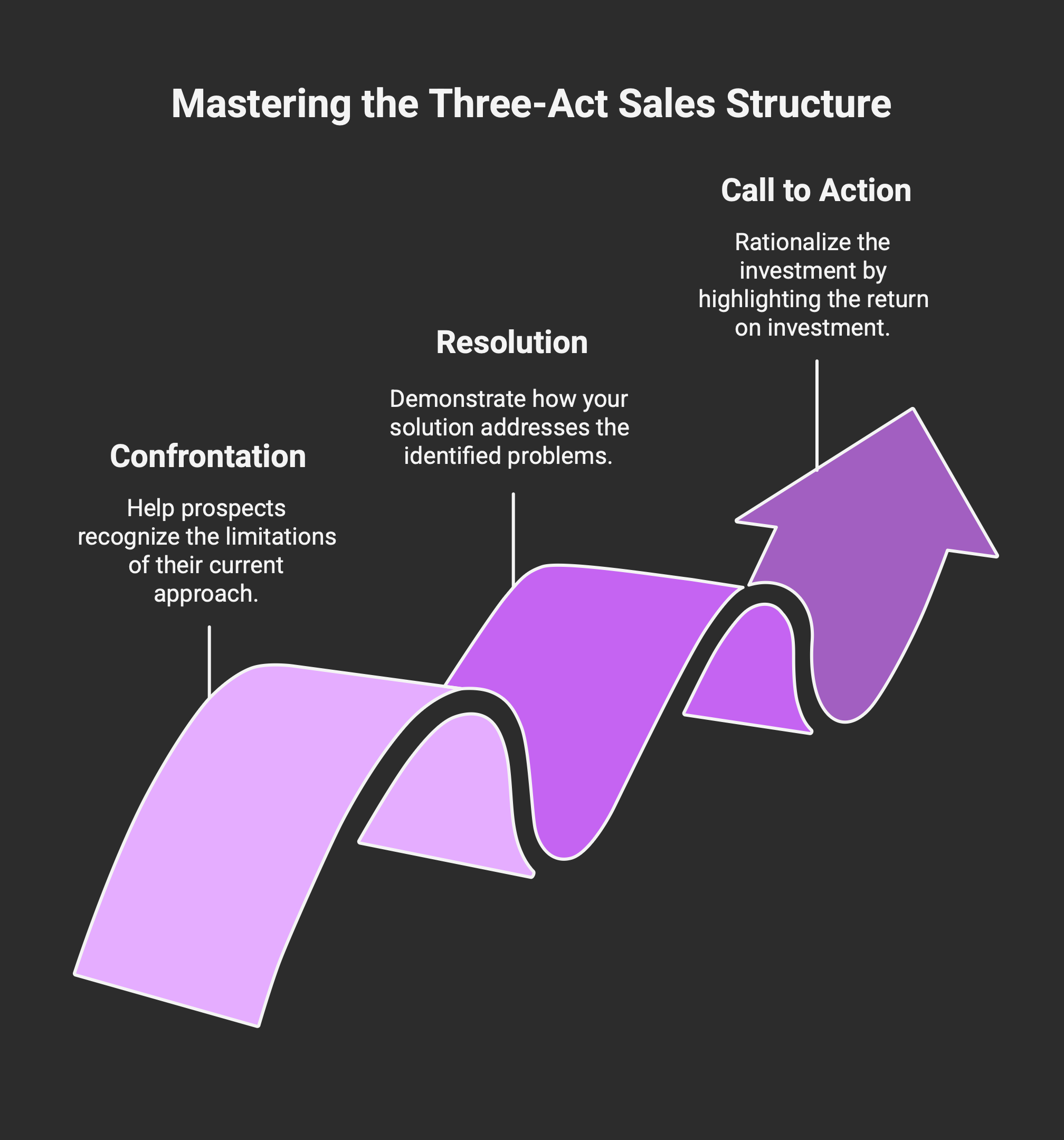The Product Founder's Pricing Paradox: Why Your Best Sales Pitch Starts Before You Mention Price

Picture this: You're a product-obsessed founder who can demo features for hours, but the moment someone asks "How much does this cost?" your palms get sweaty and you start mumbling about "competitive pricing" and "flexible packages." Sound familiar?
Here's the uncomfortable truth: most product founders treat pricing conversations like root canal appointments. We'd rather hand it off to anyone with "sales" in their title and go back to building cool features. But what if I told you that founder-led sales convert at the highest rates when done right?
The revelation isn't in becoming a smooth-talking sales machine. It's in understanding that pricing anxiety stems from fundamental strategic mistakes we make long before we ever get to the money conversation.
The Framework That Changes Everything
I recently came across a brilliantly simple yet highly effective framework from Ash Maurya, the author of two best-selling books (Running Lean and Scaling Lean) and creator of the popular 1-page business modeling tool: Lean Canvas. His approach to founder-led pricing conversations is a masterclass in strategic thinking disguised as sales methodology.
What struck me about Maurya's framework isn't just its elegance – it's how it aligns with something I've written about extensively: why CEOs should stop storytelling and start steering. The connection between strategic leadership and effective sales conversations runs deeper than most founders realize.
The Artist's Dilemma
Most entrepreneurs are artists at heart. We're passionate about our creations and can talk endlessly about elegant architectures, innovative features, and technical breakthroughs. But transitioning from "Look at this amazing thing I built!" to "And it costs $X per month" feels like switching from poetry to accounting mid-sentence.
The jarring transition happens because we approach pricing like artists too – pulling numbers from thin air or doing basic cost-plus calculations. When you can't confidently justify your product's value, both you and your prospect get emotional. And emotional sales conversations rarely end well.
Add cultural taboos around money discussions, and you've got a perfect storm of avoidance. Many founders either postpone pricing conversations indefinitely or drastically underprice to avoid confrontation.
But here's the reality check: The difference between a hobby and a business is revenue. If you want to build something sustainable, you need to master this conversation.
Where Strategy Meets Sales
This is where Maurya's framework intersects beautifully with strategic leadership principles. As I've argued before, too many CEOs get caught up in storytelling when they should be steering. The same applies to sales conversations – founders often get trapped in feature storytelling when they should be strategically guiding prospects through a value realization journey.
The secret to confident pricing conversations isn't becoming more persuasive – it's making the conversation rational instead of emotional. This starts with understanding that fair pricing (not optimal pricing, just fair) sits between two anchors:
- The cost of their current solution – How much time, money, and frustration does their existing approach cost them?
- The value your product delivers – What measurable improvements will they see?
Most founders skip straight to anchor #2 without establishing anchor #1. This is backwards. Before you can sell your new way, you have to break their old way.
The Three-Act Sales Structure
Maurya's approach treats every product pitch as a switching story with three distinct acts:
Act 1: Confrontation – Break their old way
This isn't about trash-talking competitors. It's about helping prospects recognize the hidden costs and limitations of their current approach. For example, if you're selling project management software, you might explore how their spreadsheet-and-email system creates invisible friction.
"In our experience, spreadsheets work great for static data, but they often fall short with collaborative projects because there's no single source of truth. Changes aren't tracked in real-time, and visibility across teams is limited. Has that been your experience?"
Notice the consultation, not confrontation. You're helping them articulate problems they already feel but might not have quantified.
Act 2: Resolution – Demonstrate your new way
This isn't a feature dump. It's a before-and-after story that directly addresses the problems you just uncovered. Show exactly how your solution eliminates the friction points they've acknowledged.
"Instead of scattered spreadsheets, here's how your team would have a single source of truth. Notice how changes are tracked in real-time, and here's how everyone gets full visibility without those time-consuming update meetings."
Act 3: Call to Action – Rationalize the investment
Now comes the pricing conversation, but notice what's already happened. They've emotionally bought into both the problem and your solution. The pricing becomes a rational discussion about return on investment.
"As we discussed, your current approach costs roughly $X in lost productivity each month. Our platform helps you reclaim that time and deliver projects ahead of schedule. Given that value equation, we've structured our pricing at $Y per user, which represents just a fraction of the value you'll receive."

The Leadership-Sales Connection
This three-act structure mirrors what effective CEOs do in strategic decision-making. Instead of jumping to solutions, they first help stakeholders understand the current state's limitations, then present a clear path forward, and finally make the rational case for investment.
The same principles that make you a better strategic leader make you a better salesperson. Both require:
- Deep understanding of current state problems
- Clear articulation of desired future state
- Rational justification for the investment required to bridge the gap
The Signal in the Noise
Here's a counterintuitive insight from Maurya's experience: If prospects agree to your pricing too easily, you're probably leaving money on the table. He shares how one customer immediately accepted their initial pricing without hesitation – a clear signal they were underpriced.
They doubled their pricing for the next prospect – still yes. They eventually landed at 5x their original price point, all because they paid attention to market signals.
This connects back to the strategic leadership principle of data-driven decision making. In sales, as in strategy, you need to read the signals and adjust accordingly.
The Foundation Everything Builds On
This entire approach hinges on one critical factor: deep customer understanding. When you truly comprehend your customers' challenges better than they do, you gain what feels like superpowers in sales conversations.
But if you haven't done proper customer discovery work, no sales technique will save you. You need genuine insights to effectively demonstrate value and justify pricing.
This is where the CEO's strategic role becomes crucial. Building deep customer understanding isn't just a sales activity – it's a strategic imperative that should inform product development, market positioning, and resource allocation.
From Dread to Anticipation
The transformation from dreading pricing conversations to anticipating them happens when you realize you're not selling features – you're selling outcomes. You're not asking for money – you're offering a trade that clearly benefits both parties.
When you've done the foundational work of understanding problems and quantifying value, pricing conversations become consultative discussions rather than adversarial negotiations.
The best part? This approach works because it's authentic. You're not learning tricks or manipulation tactics. You're simply becoming better at articulating the value you already provide.
The Strategic Imperative
Maurya's framework is beautifully simple but highly effective because it recognizes that great sales conversations are strategic conversations in disguise. When founders master this approach, they're not just becoming better at selling – they're becoming better leaders.
Remember: Confident pricing starts long before you mention price. It begins with deep customer understanding, continues with clear value demonstration, and culminates in rational investment discussions.
Master this sequence, and you'll transform pricing from your biggest anxiety into your strongest competitive advantage – while simultaneously becoming the kind of strategic leader your startup needs to scale.
Stay Raw | Stay Real | Stay Intense.
